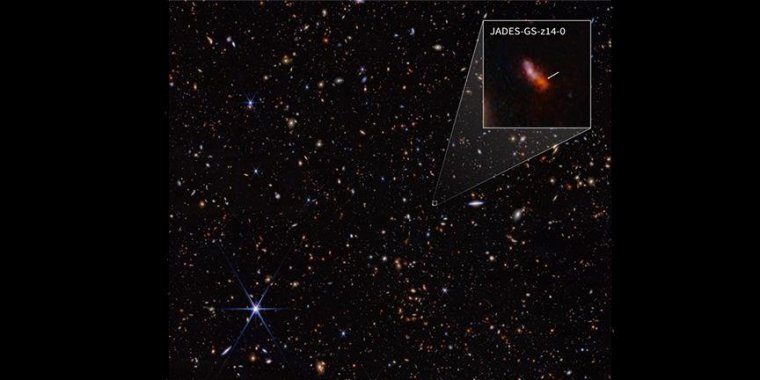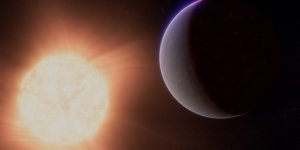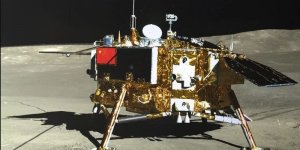| News / Space News |
Earliest, most distant galaxy discovered with James Webb Space Telescope
The two earliest and most distant galaxies yet confirmed, dating back to only 300 million years after the Big Bang, have been discovered using NASA’s James Webb Space Telescope (JWST), an international team of astronomers today announced.

Infrared image showing JADES-GS-z14-0 galaxy. Photo: NASA, ESA, CSA, STScI, Brant Robertson (UC Santa Cruz), Ben Johnson (CfA), Sandro Tacchella (Cambridge), Phill Cargile (CfA)
“These galaxies join a small but growing population of galaxies from the first half billion years of cosmic history where we can really probe the stellar populations and the distinctive patterns of chemical elements within them,” said Dr Francesco D’Eugenio of the Kavli Institute for Cosmology at the University of Cambridge, one of the team behind the discovery.
Because of the expansion of the Universe, the light from distant galaxies stretches to longer wavelength as it travels, an effect known as redshift.
In these galaxies, the effect is extreme, stretching by a factor of 15, and moving even the ultraviolet light of the galaxies to infrared wavelengths where only JWST has the capability to see it.
Modern theory holds that galaxies develop in special regions where gravity has concentrated the cosmic gas and dark matter into dense lumps known as ‘halos’. These halos evolved quickly in the early Universe, rapidly merging into more and more massive collections of matter.
This fast development is why astronomers are so eager to find yet earlier galaxies: each small increment moves our eyes to a less developed period, where luminous galaxies are even more distinctive and unusual.
The two newly discovered galaxies have been confirmed spectroscopically. In keeping with the collaboration’s standard naming practice, the galaxies are now known as JADES-GS-z14-0 and JADES-GS-z14-1, the former being the more distant of the two.
In addition to being the new distance record holder, JADES-GS-z14-0 is remarkable for how big and bright it is. JWST measures the galaxy at over 1,600 light-years in diameter.
Many of the most luminous galaxies produce the bulk of their light via gas falling into a supermassive black hole, producing a quasar, but at this size JADES-GS-z14-0 cannot be this. Instead, the researchers believe the light is being produced by young stars.
Found in a region near the Hubble Ultra Deep Field by the JWST Advanced Deep Extragalactic Survey (JADES) team, these galaxies mark a major milestone in the study of the early Universe.
The combination of the high luminosity and the stellar origin makes JADES-GS-z14-0 the most distinctive evidence yet found for the rapid formation of large, massive galaxies in the early Universe.
This trend runs counter to the pre-JWST expectations of theories of galaxy formation. Evidence for surprisingly vigorous early galaxies appeared even in the first JWST images and has been mounting in the first two years of the mission.
“JADES-GS-z14-0 now becomes the archetype of this phenomenon,” said Dr Stefano Carniani of the Scuola Normale Superiore in Pisa, lead author on the discovery paper. “It is stunning that the Universe can make such a galaxy in only 300 million years.”
Despite its luminosity, JADES-GS-z14-0 was a puzzle for the JADES team when they first spotted it over a year ago, as it appears close enough on the sky to a foreground galaxy that the team couldn’t be sure that the two weren’t neighbours.
But in October 2023, the JADES team conducted even deeper imaging—five full days with the JWST Near-Infrared Camera on just one field—to form the “JADES Origins Field.” With the use of filters designed to better isolate the earliest galaxies, confidence grew that JADES-GS-z14-0 was indeed very distant.
“We just couldn’t see any plausible way to explain this galaxy as being merely a neighbour of the more nearby galaxy,” said Dr Kevin Hainline, research professor at the University of Arizona.
Fortunately, the galaxy happened to fall in a region where the team had conducted ultra-deep imaging with the JWST Mid-Infrared Instrument.
The galaxy was bright enough to be detected in 7.7 micron light, with a higher intensity than extrapolation from lower wavelengths would predict.
“We are seeing extra emission from hydrogen and possibly even oxygen atoms, as is common in star-forming galaxies, but here shifted out to an unprecedented wavelength,” said Jakob Helton, graduate student at the University of Arizona and lead author of a second paper on this finding.
These combined imaging results convinced the team to include the galaxy in what was planned to be the capstone observation of JADES, a 75-hour campaign to conduct spectroscopy on faint early galaxies.
The spectroscopy confirmed their hopes that JADES-GS-z14-0 was indeed a record-breaking galaxy and that the fainter candidate, JADES-GS-z14-1, was nearly as far away.
YOU MAY ALSO LIKE





